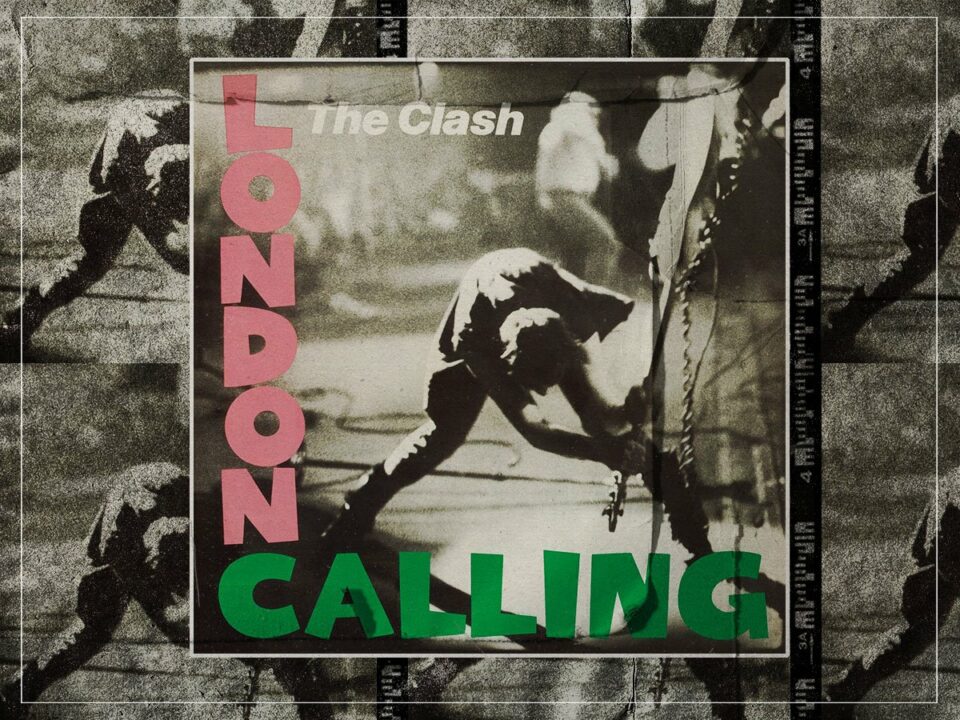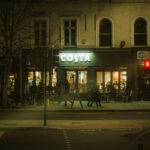Who recognized the power and potential of the iconic photograph?
Meta Title: Unveiling the Mystery: The Guitar-Smashing Icon of ‘London Calling’ Revealed
Meta Description: Discover the story behind the iconic guitar-london-news.net/2024/06/07/news/smashing-pumpkins-and-weezer-londons-o2-arena-timings-support-acts-and-tickets/” title=”Smashing Pumpkins and Weezer London's O2 Arena: Timings, Support Acts and Tickets”>smashing moment in ‘London Calling’ and learn about the band’s inspiration and influence.
If there’s one image that encapsulates the rebellious spirit and raw energy of punk rock, it’s the photograph of Paul Simonon, bassist for The Clash, smashing his Fender Precision Bass on stage during a performance at The Palladium in New York City on September 21, 1979. The moment was captured by photographer Pennie Smith and went on to become the iconic cover art for the band’s third studio album, ‘London Calling.’
The guitar-smashing incident has become legendary in the world of rock music, symbolizing the band’s defiance of convention and their willingness to push boundaries. However, the story behind this moment, as well as its significance, is shrouded in mystery. In this article, we’ll delve into the history and impact of this iconic image, revealing the inspiration and influence behind The Clash’s legendary act.
The Clash: A Brief History
Before we unravel the mystery of the guitar-smashing incident, it’s essential to understand the context in which The Clash emerged as a force in the music industry. Formed in London in 1976, The Clash quickly rose to prominence as a key player in the punk rock movement. Known for their socially conscious lyrics, high-energy performances, and politically charged message, the band carved out a unique identity that set them apart from their peers.
As The Clash’s popularity grew, they found themselves at the forefront of a musical revolution, challenging the status quo and advocating for change. Their music resonated with a generation disillusioned with the political and social climate of the time, and they quickly became an influential voice in the punk rock scene.
The Birth of ‘London Calling’
In 1979, The Clash released their third studio album, ‘London Calling,’ a masterpiece that would solidify their reputation as one of the most innovative and important bands in the history of rock music. The album showcased the band’s diverse range of influences, incorporating elements of punk, reggae, ska, rockabilly, and more.
The title track, “London Calling,” was a powerful anthem that captured the essence of the band’s rebellious spirit, addressing themes of urban decay, unemployment, and political unrest. The song’s urgent, apocalyptic vibe struck a chord with audiences, and it quickly became a rallying cry for disaffected youth around the world.
The Guitar-Smashing Incident
During a performance at The Palladium in New York City to promote ‘London Calling,’ The Clash was at the peak of their powers, delivering a blistering set that showcased their unparalleled energy and intensity. As the band tore through their setlist with ferocious determination, the crowd was swept up in a frenzy of excitement.
It was during the performance of “London Calling” that Paul Simonon, fueled by the raw emotion of the music and the chaotic energy of the moment, unleashed an act of defiance that would go down in rock history. Frustrated by the strict security at the venue that prevented the audience from standing and dancing, Simonon smashed his beloved Fender Precision Bass on the stage, venting his frustration and embodying the pent-up energy of punk rock rebellion.
The Moment Captured: Impact and Legacy
Pennie Smith, The Clash’s official photographer, was in the right place at the right time, capturing the exact moment when Simonon’s bass collided with the stage. The resulting photograph, with Simonon’s bass raised high above his head, captured the very essence of punk rock rebellion, embodying the band’s ethos and the spirit of ‘London Calling.’
The image was initially deemed too out of focus for use as an album cover, but the band’s graphic designer, Ray Lowry, recognized its power and potential. The iconic photograph was ultimately chosen as the cover art for ‘London Calling,’ becoming an enduring symbol of The Clash’s uncompromising nature and artistic vision.
The photograph’s impact went far beyond the album cover, serving as a visual representation of the band’s ethos and inspiring countless musicians and fans alike. It has been emulated, referenced, and celebrated in the decades since, cementing its status as a defining image of punk rock rebellion.
Unveiling the Mystery
The guitar-smashing incident, while a visceral and cathartic moment in The Clash’s history, was not a premeditated act. In interviews, both Paul Simonon and the band’s frontman, Joe Strummer, have explained that it was a spontaneous outburst fueled by the intensity of the performance and the band’s frustration with the venue’s security restrictions.
While some have speculated about the symbolic meaning behind the act, attributing it to a desire to break free from the constraints of the music industry or to rebel against the limitations of punk rock itself, Simonon has emphasized that it was simply an impulsive release of emotion in the heat of the moment.
Despite
The Clash: Pioneers of Punk Rock Visual Identity
Punk rock, known for its loud guitars and politically charged lyrics, revolutionized not only music but also the visual arts. The Clash, a defining band of the London punk movement in 1976, understood the significance of visual identity in their artistic expression.
The band, formed by guitarist Mick Jones and frontman Joe Strummer from The 101ers, recognized the power of art to complement their music. With a background in art school, Jones, Strummer, and bassist Paul Simonon created a diverse visual image that matched their eclectic musical style blending punk with rockabilly, dub, ska and hip-hop.
Their cover artwork for singles like ‘White Riot’, ‘(White Man) In Hammersmith Palais,’ and the ‘Cost of Living’ EP set them apart from other major label-signed bands at the time. But their seminal moment came with ‘London Calling,’ which showcased an iconic cover featuring Simonon smashing his Fender Precision Bass on stage during a performance at the Palladium in New York City.
Photographer Pennie Smith initially disliked this out-of-focus photo but it was artist Ray Lowry who saw its potential as an album cover. The resulting image became legendary within punk culture.
Simonon’s choice of bass guitar played a crucial role in this iconic moment. He favored the Fender Precision Bass for its weight and fuller sound – a favorite among celebrated bassists such as John Cale and Sid Vicious. In fact, the very same bass he smashed is now on display at the Museum of London.
The Clash’s ability to merge music with powerful visual imagery solidified their position as pioneers not only within punk rock but also within graphic design. Their impact transcended beyond just what was heard through speakers – it was visually arresting as well.
New Related Topics: Punk Music Revolutionizing Visual Arts


